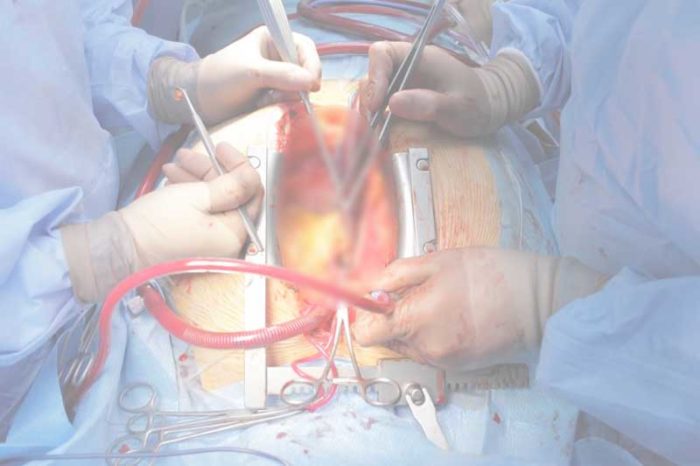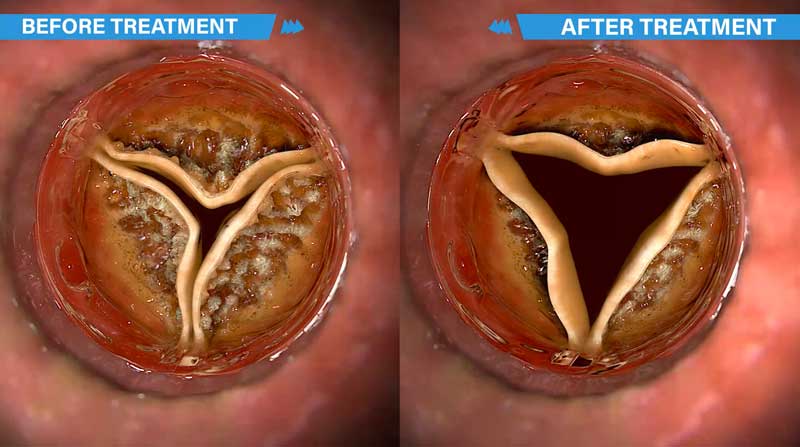

The only medical response to severe symptomatic Calcific Aortic Stenosis (CAS) is currently a valve replacement, either by open-heart surgery (SAVR) or by a less-invasive procedure called TAVR (Transcatheter Aortic Valve Replacement).
Unfortunately, not all severe symptomatic CAS patients are eligible for SAVR or TAVR (16%) (1) and some refuse surgery.

The standard treatment consists in replacing the aortic valve with a biological or mechanical valve during an open-heart surgery, with extracorporeal circulation and the heart stopped – the patient is clinically dead. This surgery is a serious, expensive and risky operation. There are about 500,000 open heart surgeries performed every year worldwide (1).

Since 2007, a new technique for minimally invasive endovascular surgery called TAVR has been used with spectacular results. This procedure consists in replacing the aortic valve via a percutaneous route passing preferably through either the aorta or the femoral artery. It allows almost all patients for whom open-heart surgery is contraindicated to be treated, but it has an incidence of vascular and hemorrhagic complications and causes cerebrovascular accidents and kidney injury.

To treat calcific aortic stenosis, Cardiawave has developed a Non-Invasive Ultrasound Therapy (NIUT). NIUT consists in repairing the aortic valve, not replacing it. No surgery is required. Our unique approach could represent both an alternative and a complementary approach to current procedures.